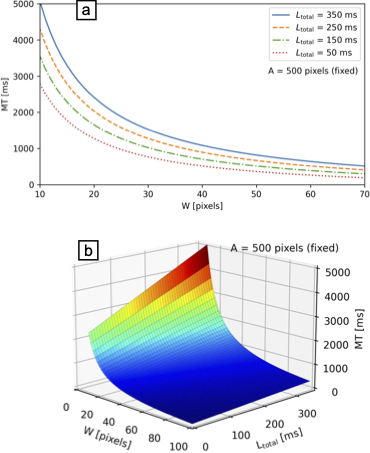
The Effect of Latency on Movement Time in Path-steering Inproceedings
Shota Yamanaka, Wolfgang Stuerzlinger
Abstract:
In current graphical user interfaces, there exists a (typically unavoidable) end-to-end latency from each pointing-device movement to its corresponding cursor response on the screen, which is known to affect user performance in target selection, e.g., in terms of movement time (MTs). Previous work also reported that a long latency increases MTs in path-steering tasks, but the quantitative relationship between latency and MT had not been previously investigated for path-steering. In this work, we derive models to predict MTs for path-steering and evaluate them with five tasks: goal crossing as a preliminary task for model derivation, linear-path steering, circular-path steering, narrowing-path steering, and steering with target pointing. The results show that the proposed models yielded an adjusted R^2 > 0.94, with lower AICs and smaller cross-validation RMSEs than the baseline models, enabling more accurate prediction of MTs.
